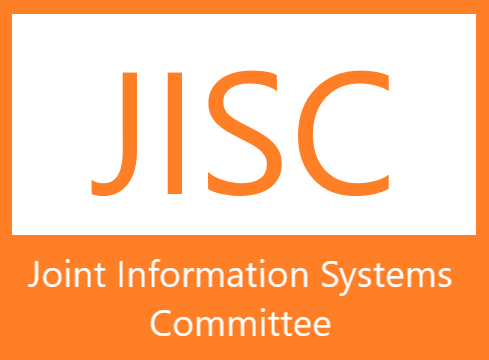Abstract
Background: The COVID-19 lockdown severely affected dietary behaviors, particularly meat or equivalent consumption. This study aimed to understand the impact of COVID-19 confinement on meat or equivalent consumption pattern among Sri Lankans.
Methods: A cross-sectional study was conducted from 27th May to 2nd June 2021 as a national-level online survey in Sri Lanka using a self-administered questionnaire developed as Google forms. The questionnaire consisted of questions related to socio-demographics and dietary behaviors. Descriptive, univariate, and multinomial logistic regression was performed. The statistical significance is considered at less than 0.05.
Results: A total of 3600 respondents were included, with the majority being women (60.1%). A higher proportion of the participants increased their consumption of eggs (53.7%), dhal (47.0%), and dry fish and sprats (36.3%). A big trend was observed in cutting down the fish (41.1%) and other seafood (52.0%) consumption. Nearly half of the respondents did not change their consumption of meat other than chicken (54.5%), pulses (52.6%), soya meat (52.1%), dry fish and sprats (48.9%), canned fish (47.6%), sausages and meatballs (45.1%), and chicken (43.7%). The males (odds ratio (OR) 0.852; 95% CI: 0.738 to 0.984, P = 0.029) and Tamil (OR = 1.605, 95% CI: 1.150 to 2.239, P = 0.005) showed a significant likelihood to increase egg consumption. Respondents with a lower income <25,000 LKR (OR 2.220; 95% CI 1.672-2.947, P = 0.000) were more than twice likely to report increased dhal consumption. The same income group (< 25,000 LKR) (OR = 2.752; 95% CI: 2.024-3.741, P = 0.000) reported more than twice reduction in fish consumption. Respondents in municipal area (OR = 1.523; 95% CI: 1.186 to 3.292, P = 0.009) showed a significantly higher likelihood to reduction in other seafood consumption.
Conclusion: An overall change in meat or equivalent consumption behavior among Sri Lankan adults was evidenced. Furthermore, nutrition recommendations should be revised to avoid future long-term consequences. Fish and other seafood intake declined, while consumption of eggs, dhal, dry fish, and sprats increased.
Downloads
References
- Sharma S, Sheehy T, Kolonel LN. Contribution of meat to vitamin B (1)(2), iron and zinc intakes in five ethnic groups in the USA: implications for developing food-based dietary guidelines. Journal of human nutrition and dietetics: the official journal of the British Dietetic Association. 2013;26(2):156-68. doi: 10.1111/jhn.12035.
- Laskowski W, Gorska-Warsewicz H, Kulykovets O. Meat, Meat Products, and Seafood as Sources of Energy and Nutrients in the Average Polish Diet. Nutrients. 2018;10(10). doi: 10.3390/nu10101412.
- Battaglia Richi E, Baumer B, Conrad B, Darioli R, Schmid A, Keller U. Health Risks Associated with Meat Consumption: A Review of Epidemiological Studies. International journal for vitamin and nutrition research Internationale Zeitschrift fur Vitamin- und Ernahrungsforschung Journal international de vitaminologie et de nutrition. 2015;85(1-2):70-8. doi: 10.1024/0300-9831/a000224.
- Walker P, Rhubart-Berg P, McKenzie S, Kelling K, Lawrence RS. Public health implications of meat production and consumption. Public health nutrition. 2005;8(4):348-56. doi: 10.1079/phn2005727.
- Jayawardena R, Sooriyaarachchi P, Chourdakis M, Jeewandara C, Ranasinghe P. Enhancing immunity in viral infections, with special emphasis on COVID-19: A review. Diabetes & metabolic syndrome. 2020;14(4):367-82. doi: 10.1016/j.dsx.2020.04.015.
- Aman F, Masood S. How nutrition can help to fight against COVID-19 Pandemic. Pak J Med Sci. 2020 May;36 (COVID19-S4): S121-S123. doi: 10.12669/pjms.36.COVID19-S4.2776.
- Ali Jadoo SA. The second wave of COVID-19 is knocking at the doors: have we learned the lesson? Journal of Ideas in Health. 2020 Oct. 8;3(Special1):183-4. Doi: 10.47108/jidhealth.vol3.issspecial1.72
- Elsahoryi N, Al-Sayyed H, Odeh M, McGrattan A, Hammad F. Effect of Covid-19 on food security: A cross-sectional survey. Clinical nutrition ESPEN. 2020; 40:171-8. doi: 10.1016/j.clnesp.2020.09.026.
- Jayawardena R, Misra A. Balanced diet is a major casualty in COVID-19. Diabetes Metab Syndr. 2020;14(5):1085-6. Epub 2020/07/12. doi: 10.1016/j.dsx.2020.07.001.
- Di Renzo L, Gualtieri P, Pivari F, Soldati L, Attina A, Cinelli G, et al. Eating habits and lifestyle changes during COVID-19 lockdown: an Italian survey. Journal of translational medicine. 2020;18(1):229. doi: 10.1186/s12967-020-02399-5.
- Jain R SR. Effect of lockdown on protein intake and sleep patterns in adults aged 40-60 years in Jain community. International journal of creative research thoughts. 2021;9(6):871-88.
- Rahman CKF, Sharun K, Chand S, Bardhan D, Dhama K, Kumar RR. Impact of Covid-19 Pandemic and Lockdown on the Meat Consumption Pattern in India: A Preliminary Analysis. Journal of Experimental Biology and Agricultural Sciences. 2021;9(2):172-82. doi: 10.18006/2021.9(2).172.182.
- Francis TV, Sooriyaarachchi P, Jayawardena R. Usage of nutritional supplements to improve immunity during the COVID-19 pandemic: An online survey. Clinical nutrition open science. 2022; 43:6-19. doi: 10.1016/j.nutos.2022.04.003.
- Sooriyaarachchi P, Francis TV, Jayawardena R. Fruit and vegetable consumption during the COVID-19 lockdown in Sri Lanka: an online survey. Nutrire. 2022;47(2). doi: 10.1186/s41110-022-00161-z.
- Sooriyaarachchi P, Francis TV, King N, Jayawardena R. Increased physical inactivity and weight gain during the COVID-19 pandemic in Sri Lanka: An online cross-sectional survey. Diabetes Metab Syndr. 2021 Jul-Aug;15(4):102185. doi: 10.1016/j.dsx.2021.06.022.
- Srivastav AK, Sharma N, Samuel AJ. Impact of Coronavirus disease-19 (COVID-19) lockdown on physical activity and energy expenditure among physiotherapy professionals and students using web-based open E-survey sent through WhatsApp, Facebook and Instagram messengers. Clinical epidemiology and global health. 2021; 9:78-84. doi: 10.1016/j.cegh.2020.07.003.
- Gornicka M, Drywien ME, Zielinska MA, Hamulka J. Dietary and Lifestyle Changes During COVID-19 and the Subsequent Lockdowns among Polish Adults: A Cross-Sectional Online Survey PLifeCOVID-19 Study. Nutrients. 2020;12(8). doi: 10.3390/nu12082324.
- Galali Y. The impact of COVID-19 confinement on the eating habits and lifestyle changes: A cross sectional study. Food science & nutrition. 2021. doi: 10.1002/fsn3.2179.
- Janssen M, Chang BPI, Hristov H, Pravst I, Profeta A, Millard J. Changes in food consumption during the covid-19 pandemic: analysis of consumer survey data from the first lockdown period in Denmark, Germany, and Slovenia. Frontiers in nutrition. 2021; 8:635859. doi: 10.3389/fnut.2021.635859.
- Prete M, Luzzetti A, Augustin LSA, Porciello G, Montagnese C, Calabrese I, et al. Changes in Lifestyle and Dietary Habits during COVID-19 Lockdown in Italy: Results of an Online Survey. Nutrients. 2021;13(6). doi: 10.3390/nu13061923.
- Yu B, Zhang D, Yu W, Luo M, Yang S, Jia P. Impacts of lockdown on dietary patterns among youths in China: the COVID-19 Impact on Lifestyle Change Survey. Public health nutrition. 2021;24(11):3221-32. doi: 10.1017/S1368980020005170.
- Alamri ES. Effects of COVID-19 home confinement on eating behaviour: A review. Journal of public health research. 2021;10: 2088. https://doi.org/10.4081/jphr.2021.2088.
- Mandal SC, Boidya P, Haque MI-M, Hossain A, Shams Z, Mamun A-A. The impact of the COVID-19 pandemic on fish consumption and household food security in Dhaka city, Bangladesh. Global Food Security. 2021;29. doi: 10.1016/j.gfs.2021.100526.
- Haskaraca G, Bostanci E, Arslan Y. Effects of the COVID-19 Pandemic on Eating and Meat Consumption Habits of Turkish Adults. Turkish Journal of Agriculture - Food Science and Technology. 2021;9(1):63-9. doi: 10.24925/turjaf. v9i1.63-69.3704.
- Boleslawska I, Blaszczyk-Bebenek E, Jagielski P, Jagielska A, Przyslawski J. Nutritional behaviors of women and men in Poland during confinement related to the SARS-CoV-2 epidemic. Scientific reports. 2021;11(1):19984. doi: 10.1038/s41598-021-99561-w.
- Abeywickrama HM, Wimalasiri KMS, Koyama Y, Uchiyama M, Shimizu U, Chandrajith R, Nanayakkara N. Assessment of nutritional status and dietary pattern of a rural adult population in dry zone, Sri Lanka. Int J Environ Res Public Health. 2019 Dec 24;17(1):150. doi: 10.3390/ijerph17010150.
- Jayawardena R, Byrne NM, Soares MJ, Katulanda P, Hills AP. Food consumption of Sri Lankan adults: an appraisal of serving characteristics. Public Health Nutr. 2013;16(4):653-8. Epub 2012/07/13. doi: 10.1017/S1368980012003011.
- Ammar A, Brach M, Trabelsi K, Chtourou H, Boukhris O, Masmoudi L, et al. Effects of COVID-19 home confinement on eating behaviour and physical activity: results of the eclb-covid19 international online survey. Nutrients. 2020 May 28;12(6):1583. doi: 10.3390/nu12061583.













